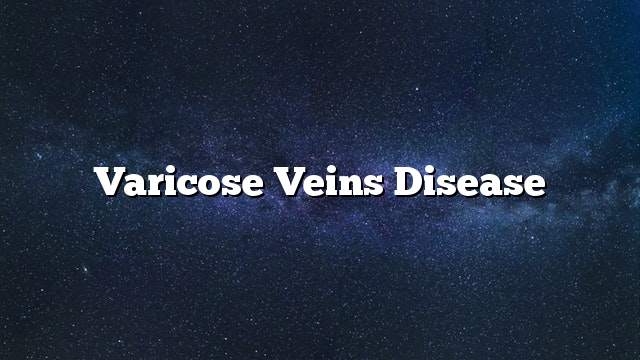Varicose veins
The varicose veins appear on the skin in the form of blue veins zigzagging extended in the leg or thigh, and may appear in the form of patches of blue or red bristles, because of a defect in the valves of veins; so that veins work in one direction, because the direction of blood within the vein is vector Towards the heart, when the valve breakdown occurs, blood gatherings, veins become large and twisted shape, and varicose veins appear.
Causes of varicose veins
- Pregnancy and resulting hormonal change in the body, which leads to the uterus making pressure on the veins in the legs.
- Weight gain and obesity.
- Standing for long periods, making people who work in jobs that require standing for long periods more vulnerable to injury than others.
- The genetic factor in some families, although the hereditary gene responsible for varicose veins is not identified in the legs.
Symptoms of varicose veins appearing
- Pain, and swelling of the legs, and may increase the swelling and pain by increasing the length of the stand.
- Swelling in the feet and ankles.
- Intravenous itching.
- Bleeding and sores from minor injuries.
- Change in skin color, inflammation and dryness in it.
Ways to prevent varicose veins
- Avoid standing for long periods. If this is not possible, it is advisable to sit for short periods between standing periods and move the toes to maintain blood flow in the blood vessels of the leg.
- Reduce the intake of foods containing cholesterol or triglycerides, as they are considered harmful foods on blood vessels.
- Avoid smoking, as it has harmful effects on blood vessels.
Treatment of varicose veins
- Injection: This method is used when varicose veins are bristles, where the doctor injects varicose veins with a solution that closes the vein.
- Laser catheterization: Helps close the vein completely without surgical intervention or anesthesia.
- Offset: This method is an effective way to hide the varicose veins. The doctor works a small hole in the skin using a small hook, in which a local bing is placed in the place where the hook is inserted.
- Injection with ultrasound guidance: This method is used in some of the capillaries or veins that result in the appearance of varicose veins which can not be seen by the naked eye. The doctor inserts a needle into the veins, guided by the information obtained by ultrasound, and the varicose veins disappear from the surface of the skin.
Tips for treating varicose veins
- Using compression socks, it is important to consult your doctor before wearing them to find out the appropriate time to wear them.
- Massage the legs where the blood circulation improves.
- Raising the feet during sleep, as this facilitates the movement of blood, and thus relieve pressure on the legs.
- Exercise exercises muscles legs such as swimming and driving the bike.
